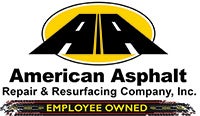Carlson-LaVine Inc. is headquartered in Minneapolis, MN, home to some of the largest construction firms in the nation. For years, the business that Thomas Shamp acquired 35 years ago navigated the competitive landscape by becoming experts in healthcare, banking, and grocery construction.
Carlson-LaVine nurtures its employees, equipping them with education, tools and advancement, keys to the company’s success. The employee turnover rate is exceptionally low in an industry known for rates averaging 21 percent and acute labor shortages.
The average tenure at Carlson-LaVine is 15 years, says Thomas’ son Matt Shamp, a 10-year-veteran himself. And he wants to keep it that way. But to do that, he knows he needs to offer not only competitive salaries but access to the latest technology – technology that makes the company and employees efficient and productive.
“At the rate technology is changing, if your software isn’t bringing you along, you’ve got a real problem,” he says. Carlson-LaVine had that problem. For nearly 25 years, they used Sage 300 CRE, which they had to augment with many manual processes.
“It worked, but it never seemed to evolve to the level that brought employees forward,” Shamp says. “It basically created more processes and more messes. Everything needed to be exported as PDF and then exported to Excel, which was an easier way to manipulate data.” Storing all those files created over 25 years caused additional headaches and required more and more servers.
When Carlson-LaVine added construction project management software Procore a few years ago, Shamp saw how much the new functionality helped his cousin grow as a project manager. “Investing in the right software took him to another level, and bringing people forward is super important to us,” Shamp says. “If our employees are well equipped, we’re going to be successful.”
Recognizing Sage was holding the company back, Shamp researched new business solutions and nearly signed a contract with a provider but decided against it. “I didn’t feel good about it; it felt rushed. And we weren’t ready,” he says.
New Direction after Examining Processes
Shamp regrouped, recognizing the company needed ”to look at our processes, and examine what we were doing today that we needed to stop doing.”
He hired a consultant, mapped out how Carlson-LaVine operated, and created “a swim lane process of who did what when, which opened our eyes to the things we were doing; showing us that we should never have to do six reports in Sage, and hand type data into an Excel spreadsheet just to get one report.”
In process examination after process examination, multiple manual manipulations kept coming up, Shamp says. “We were light-years behind [with Sage 300 CRE]. If we planned to keep on existing – not even an eye for growth – we needed to make a change.”
Not only would Carlson-LaVine need to make its staff more efficient, but with such a tenured staff, Shamp knew he’d need modern and user-friendly tools to help attract new employees as veterans retired.
“The look and the feel of Sage 300 was Windows 2000, and we are in 2021 last I knew,” Shamp says. “If you work with Procore long enough, everything is big buttons and has a flow and order. It’s designed well to carry someone through the entire construction process.”
Shamp wanted to give employees “the best tool to succeed.” In addition to an easy-to-use modern platform, he wanted something open and flexible, and that easily connected to Procore and other tools. He wanted to work with a company that had a future product roadmap with a proven track record. “It was huge to do what you said you were going to do,” he explains.
 Canada (English)
Canada (English)
 Colombia
Colombia
 Caribbean and Puerto Rico
Caribbean and Puerto Rico
 Ecuador
Ecuador
 India
India
 Indonesia
Indonesia
 Ireland
Ireland
 Malaysia
Malaysia
 Mexico
Mexico
 Panama
Panama
 Peru
Peru
 Philippines
Philippines
 Singapore
Singapore
 South Africa
South Africa
 Sri Lanka
Sri Lanka
 Thailand
Thailand
 United Kingdom
United Kingdom
 United States
United States








